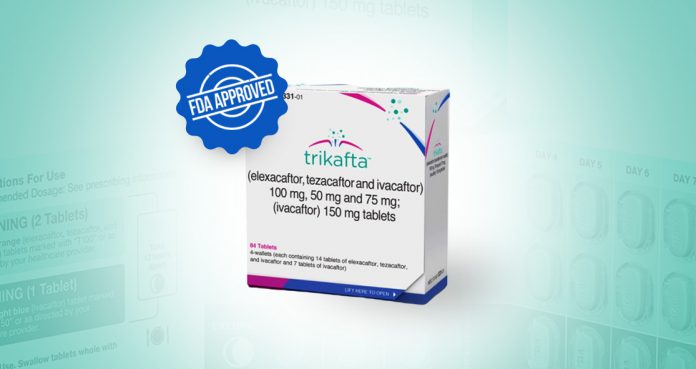The U.S. Food and Drug Administration (FDA) has approved a triple combination therapy, Trikafta, for the treatment of cystic fibrosis in patients who are 12 years and older. It is the first drug to be approved for a large group of patients with cystic fibrosis.
Trikafta is a combination of elexacaftor/tezacaftor/ivacaftor and ivacaftor drugs that target a defective protein called GFTR that is responsible for causing cystic fibrosis. There are more than 2,000 mutations of GFTR that cause that defective protein. However, Trikafta treats the common mutation.
The FDA said it is the first approved drug that could be effective for more than 90 percent of the patients.
FDA Commissioner Ned Sharpless said, “In the past few years, we have seen remarkable breakthroughs in therapies to treat cystic fibrosis and improve patients’ quality of life, yet many subgroups of cystic fibrosis patients did not have approved treatment options.”
“Today’s landmark approval is a testament to these efforts, making a novel treatment available to most cystic fibrosis patients, including adolescents, who previously had no options and giving others in the cystic fibrosis community access to an additional effective therapy,” he added.
Cystic fibrosis is one of the rare and life-threatening diseases characterized by the production and formation of thick mucus, which is build up in the important organs such as the lungs, gastrointestinal tract, and others. Excessive formation of mucus could increase the risk of diabetes and infections.
Trikafta, which is developed by Vertex Pharmaceuticals, underwent two major clinical trials, which showed promising results. In those trials, patients taking Trikafta saw an improvement in lung function as well as body mass index. Some of the common side effects included a headache, abdominal pain, upper respiratory tract infection (URTI), diarrhea, skin rashes, elevated liver enzymes, and mucus secretion in the nasal cavity.





















